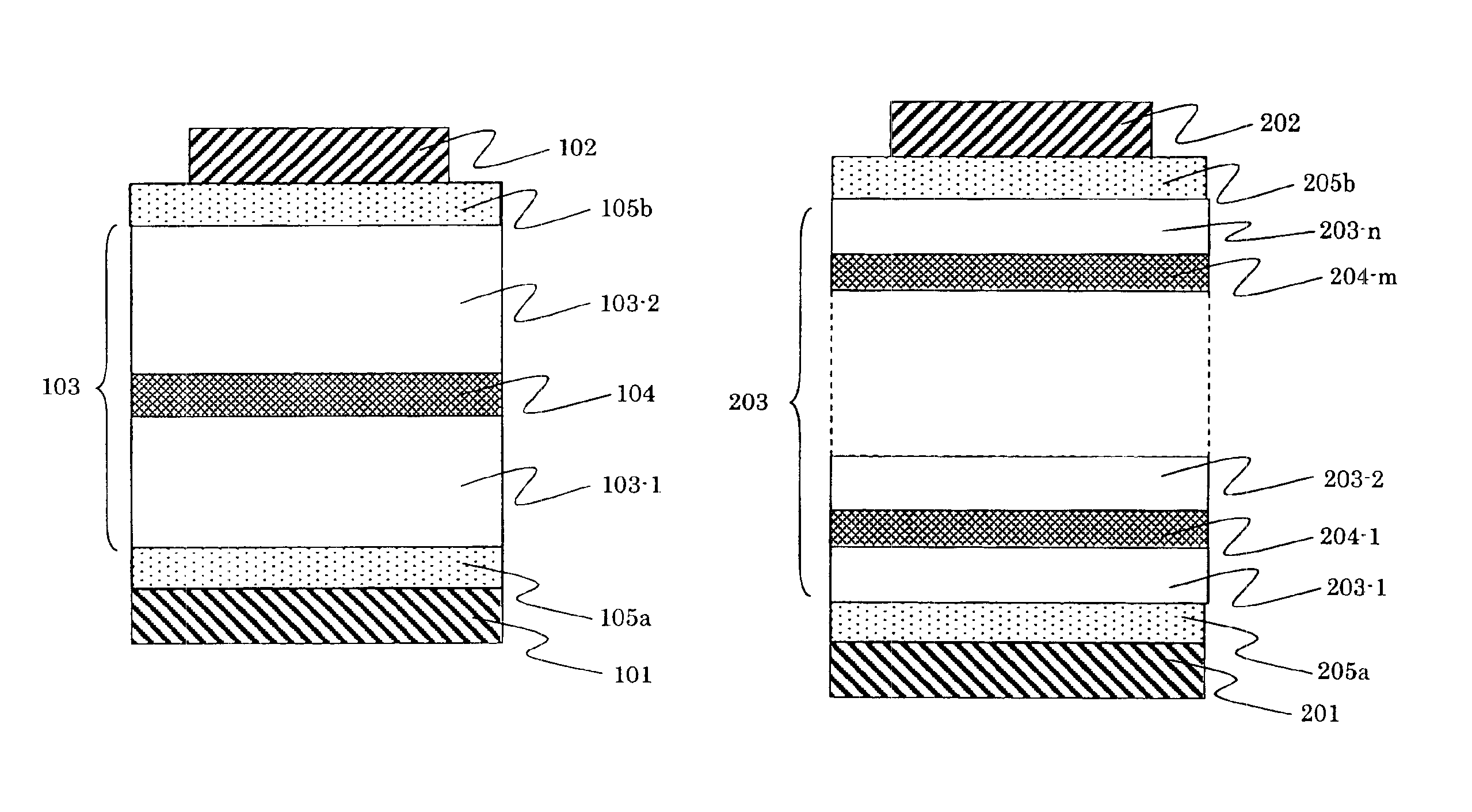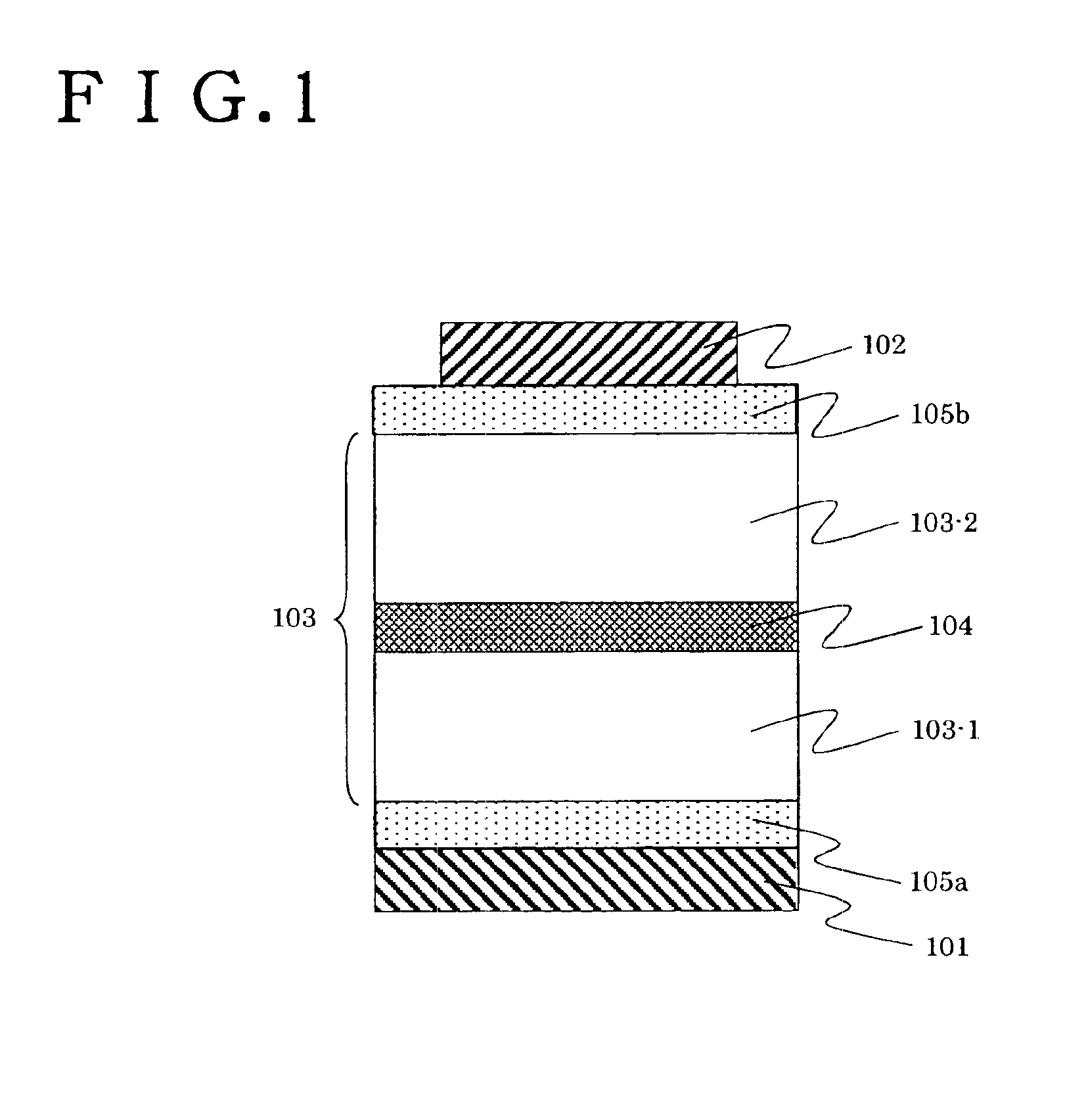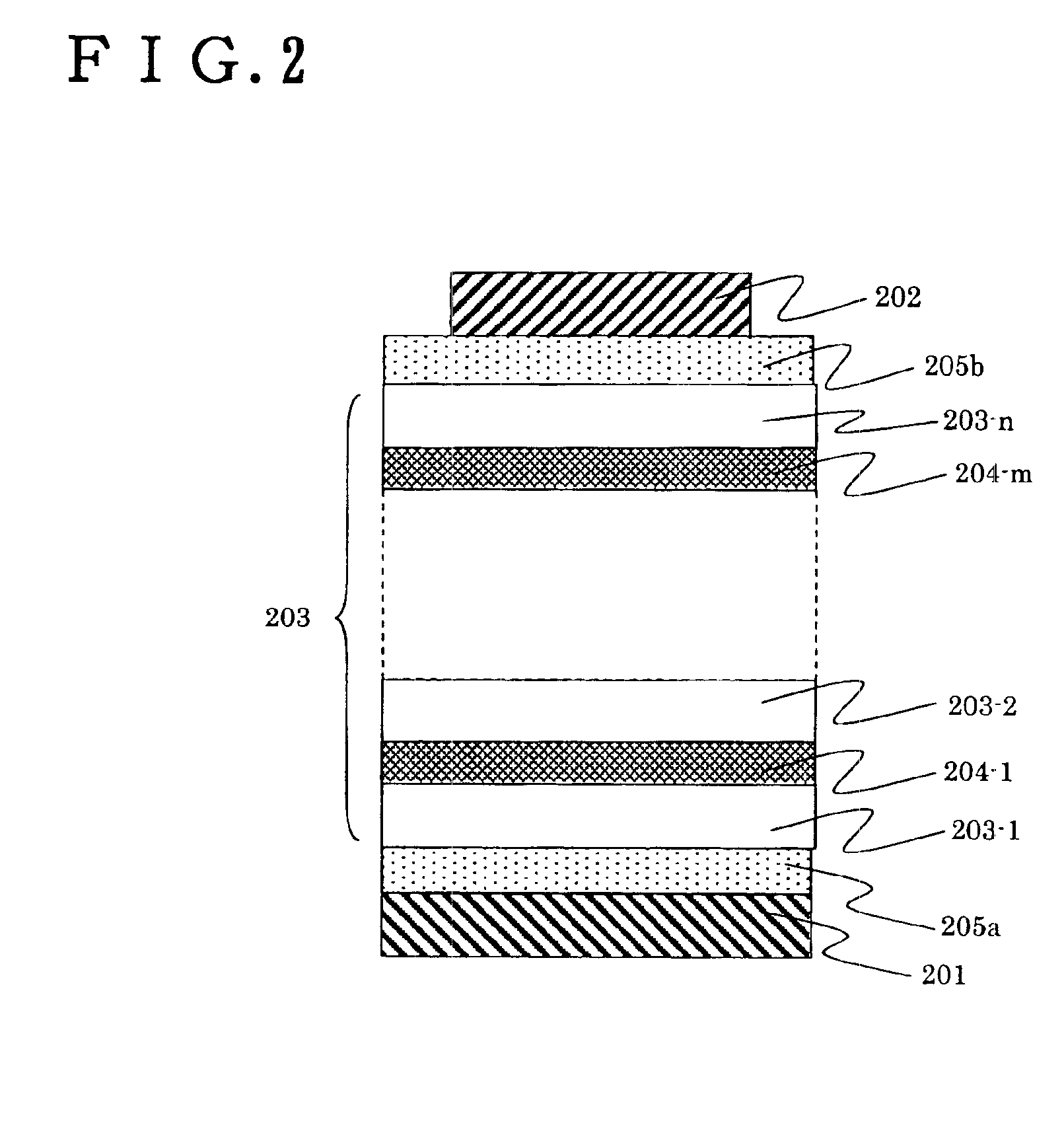Organic electroluminescent device
a technology of electroluminescent devices and organic el, which is applied in the direction of organic semiconductor devices, discharge tube luminescnet screens, other domestic articles, etc., can solve the problems of difficult even to bring the internal quantum efficiency close to 1, the current efficiency of the organic el device is not good, and the short circuit of the device can be prevented very effectively, and the yield or drive stability is excellen
- Summary
- Abstract
- Description
- Claims
- Application Information
AI Technical Summary
Benefits of technology
Problems solved by technology
Method used
Image
Examples
embodiment 1
[0079]An organic EL device of the present invention that is fabricated by the vapor deposition will be specifically described in this embodiment. First, ITO is deposited to have a thickness of 100 nm as a first electrode on a glass substrate by vapor deposition, and oxide aluminum is deposited thereon to have a thickness of 300 nm as an insulating layer by EB vapor deposition.
[0080]Next, N,N′-bis(3-methylphenyl)-N,N′-diphenyl-benzidine (abbrev., TPD) as a hole transporting material and tris (8-quinolinolato) aluminum (abbrev., Alq) as an electron transporting material are co-deposited at 1:4 weight ratio to form a bipolar first electroluminescent layer to have a thickness of 100 nm. Here, 4-dicyanomethylene-2-methyl-6-(p-dimethylaminostyryl)-4H-pyran (abbrev., DCM) as a fluorescent pigment is doped to the center portion as much as 60 nm (between 20 to 80 nm from bottom of the thickness) to have weight ratio that TPD: Alq: DCM=1:4: 0.05.
[0081]After the first electroluminescent layer ...
embodiment 2
[0083]An organic EL device of the present invention fabricated by wet coating will be specifically described in this embodiment. First, poly(vinyl phenol) is coated by spin coating to have a thickness of 200 nm as an insulating layer on the glass substrate on which ITO is formed to have approximately 100 nm in thick as a first electrode. In addition, a material for solvent is isopropanol.
[0084]Second, poly(2-methoxy-5-(2-ethyl-hexoxy)-1,4-phenylenevinylene) (abbrev., MEH-PPV) is dissolved in dichloroethane, and coated 80 nm in thick by spin coating to form a first electroluminescent layer
[0085]After the first electroluminescent layer is formed in such a way, aqueous solution of poly(ethylene dioxythiophene) doped with polystyrene sulfonic acid (abbrev., PEDOT / PSS) is spin coated to form a bipolar carrier generation layer to have a thickness of 100 nm.
[0086]Thereafter, a second electroluminescent layer is continuously formed in exactly the same way as the first electroluminescent lay...
embodiment 3
[0087]An organic EL device of the present invention fabricated by coating with polymer composite films containing luminous pigments and bonding without using vapor deposition will be specifically described in this embodiment.
[0088]First, poly(vinyl phenol) is coated by spin coating to have a thickness of 200 nm as an insulating layer on the plastic substrate (polyester substrate or polyimide substrate) on which ITO is formed 100 nm in thick as a first electrode. In addition, a material for solvent is isopropanol.
[0089]Next, dichloromethane solution prepared from 50 wt % polycarbonate as binder, 29 wt % TPD as a hole transporting material, 20 wt % 2,5-bis(1-naphthyl)-1,3,4-oxadiazole (abbrev., BND) as an electron transporting material, 1.0 wt % coumarin 6 as a luminous pigment is spin coated on the insulating layer to form a first electroluminescent layer to have 100 nm in thick.
[0090]After the first electroluminescent layer is formed in such a way, polyaniline doped with camphor-10-...
PUM
 Login to View More
Login to View More Abstract
Description
Claims
Application Information
 Login to View More
Login to View More - R&D
- Intellectual Property
- Life Sciences
- Materials
- Tech Scout
- Unparalleled Data Quality
- Higher Quality Content
- 60% Fewer Hallucinations
Browse by: Latest US Patents, China's latest patents, Technical Efficacy Thesaurus, Application Domain, Technology Topic, Popular Technical Reports.
© 2025 PatSnap. All rights reserved.Legal|Privacy policy|Modern Slavery Act Transparency Statement|Sitemap|About US| Contact US: help@patsnap.com



